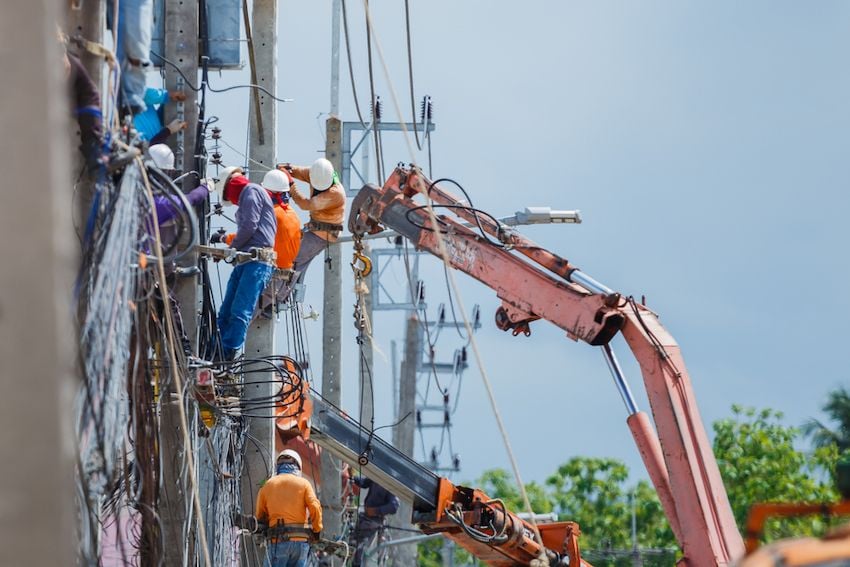Your company creates safety protocols to protect workers from serious injuries, but that doesn’t mean workers are following them. Performing field work in industries like utilities, oil and gas, and telecommunications is inherently dangerous, so it’s vital that workers take all incident prevention efforts seriously, even those they may think are unnecessary.
Boosting adherence to safety protocols begins with recognizing the protocols and best practices workers neglect most often and why. We explore the topic further here.
The most neglected safety protocols and best practices
1. Proper use of PPE
Personal protective equipment (PPE) such as safety glasses, gloves, and hard hats help protect workers in hazardous environments. However, it’s common for workers to misuse PPE or opt out of wearing some items altogether. In fact, two of the Occupational Safety and Health Administration’s 10 most frequently cited standards in Fiscal Year 2020 involved PPE.
Some reasons workers forgo PPE include not feeling it’s necessary or thinking it looks bad on them. Providing training on the importance of PPE will prevent your workers from viewing its use as optional. Additionally, management should carefully monitor and enforce PPE usage, privately speaking with any workers who violate protocols.
Other reasons workers do not use PPE is because it’s ill-fitting or uncomfortable. According to the Occupational Safety and Health Administration (OSHA), employers should make sure workers’ PPE fits comfortably and properly, as failure to do so can leave workers dangerously exposed.
Additionally, employers should create a PPE program to highlight the safety hazards that require the use of PPE; educate on the selection, maintenance, and use of PPE; train employees how to use PPE; and monitor the program’s ongoing effectiveness, according to OSHA.
Check out: How to Combat Risk Normalization
2. Staying hydrated
More than three-quarters of people don’t always drink enough water at work, according to a 2018 survey. Some of the top reasons for not drinking more water at work included not feeling thirsty (42 percent) and not having time to get water (39 percent).
Dehydration can lead to a myriad of health issues, including an inability to think clearly, mood changes, and kidney stones, according to the Centers for Disease Control and Prevention. Staying hydrated is always important, but can be especially pertinent for those working in high temperatures, as they’re more susceptible to heat-related illnesses including heatstroke, heat exhaustion, heat cramps, and heat rash.
Encourage workers to drink water throughout their shift by having an easily accessible water source and ensuring workers take frequent breaks. It’s also wise to educate employees on the risks of dehydration, so they understand why they need to keep drinking water, even if they don’t feel thirsty.
3. Avoiding distractions
In many professions, being a little distracted isn’t a major safety hazard. But, workers in high-hazard industries can’t afford to get lost in their thoughts. Temporarily losing focus can result in a mistake that causes themselves or a co-worker to become injured.
There’s no shortage of reasons people lose focus at work. Everything from feeling tired or hungry to looking at their smartphone or engaging in idle chatter with colleagues can cause them to become distracted.
Encourage your workers to keep focused by eliminating as many distractions as possible from the worksite. For example, you might ban the use of smartphones, except in designated break areas.
It’s also crucial to explain the importance of staying focused to employees. Share safety stats and examples of serious injuries incurred from accidents—at your company or elsewhere—caused by people being distracted.
Understanding Safety Indicators: Near Miss, Near Hit, and More
4. Attending (non-mandatory) safety training
When many workers hear the words “non-mandatory,” they stop listening. However, just because people aren’t required to attend a training session, doesn’t mean it’s not important.
Get people to show up to non-mandatory training sessions by clearly explaining what they’ll learn and why it’s important. Make it more enticing by offering an incentive to those who attend and holding the session at a time that’s convenient for most workers.
Ultimately, you might need to make safety trainings mandatory. If attendance is low and accident rates are high, doing so can be necessary to ensure workers receive much-needed education.
You might like: 10 Keystones of a Successful Worker Safety Program
5. Proper lifting techniques
If heavy lifting is part of the job for your workers, they need to know how to do it properly. Unfortunately, many people mistakenly lift loads that are too large or too heavy, which can cause issues such as back sprains, pulled muscles, and wrist, elbow, and spinal injuries, according to the University of North Carolina at Chapel Hill Environment, Health, and Safety Department.
Improper lifting techniques can be used for a variety of reasons, with the most likely being a failure to train workers on the correct way to lift heavy objects. Help people avoid injuries of this nature by both providing training to ensure they understand the importance of employing proper lifting techniques and teaching them how to lift heavy items correctly.
6. Teamwork
Teamwork should be a huge part of every safety management plan because accidents happen when people aren’t on the same page. If employees don’t get along, are too competitive with one another, or otherwise have communication issues, this puts them at a higher risk for safety incidents.
You can encourage a stronger sense of togetherness by planning team-building events. Activities like having lunch together, hosting after-work get-togethers, or attending a local sporting event as a group will help people get to know one another on a personal level.
This plays into worker safety because employees who are comfortable together function better as a team. When a group of people cares about one another, they’re more motivated to put their peers’ well-being first.
Safety protocols are put in place for a reason, so it’s important to make sure workers are taking them seriously. If your workers are neglecting to properly use PPE, stay hydrated, or follow the other protocols and best practices discussed here, take measures to turn things around immediately.
For more information about encouraging workers to follow safety protocols and best practices, watch “How to Create a Safety-First Culture.”

